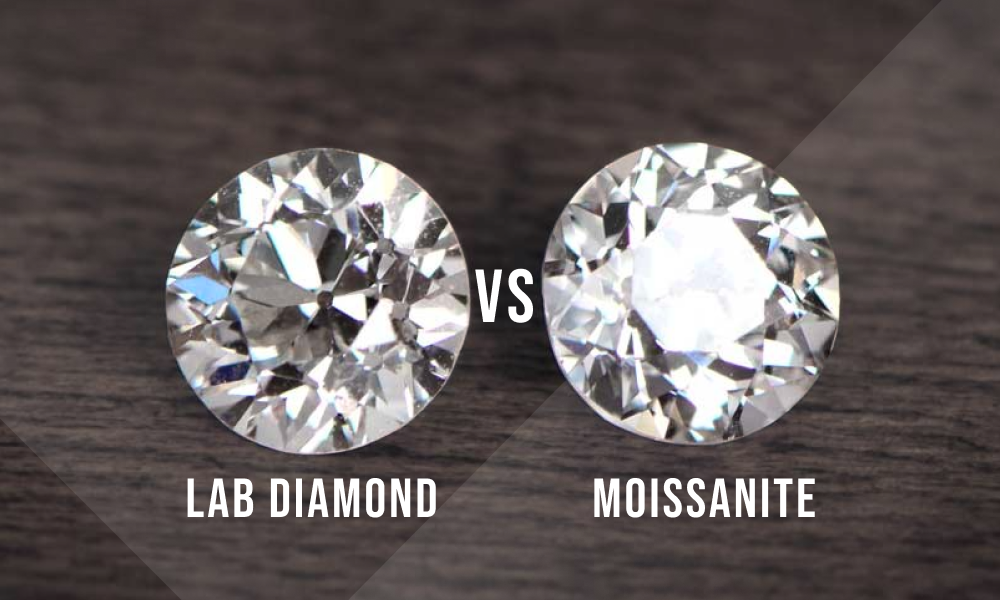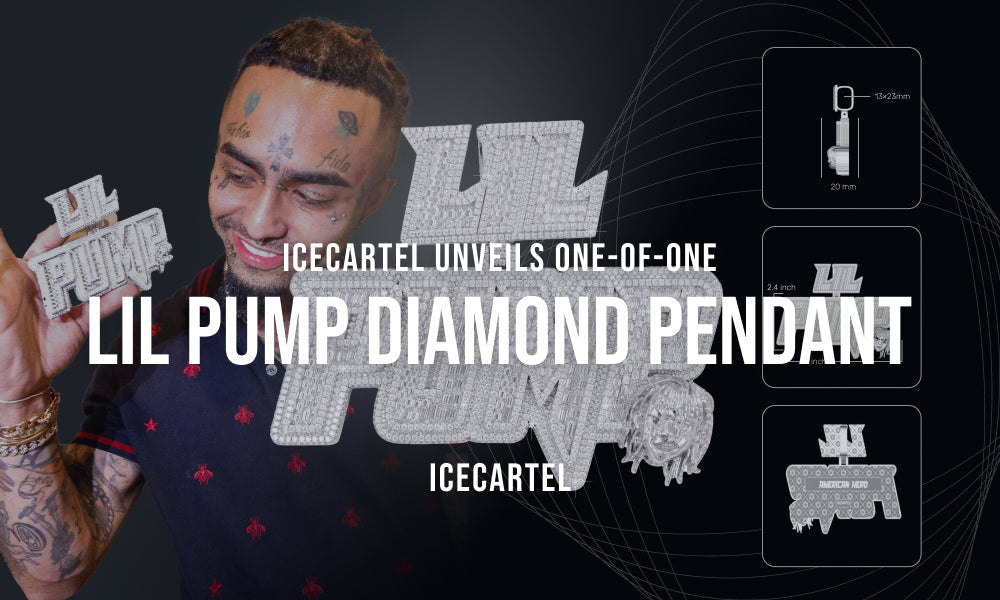White gold has grown in popularity as a sleek, sophisticated alternative to platinum, offering a similar appearance at a more affordable price. While yellow gold has a timeless warmth, white gold’s pure, bright luster brings an elegant, modern touch.
Favored for engagement rings, wedding bands, and other jewelry pieces, white gold enhances both diamonds and gemstones with its neutral, radiant shine. When properly cared for, white gold remains durable and lustrous, preserving its fresh, polished look for years. With its versatile, modern aesthetic, white gold is a perfect choice to complement any style.
But what exactly is white gold, and how do you know if it’s real? In this article, we’ll explore these questions and help you decide whether white gold is the right metal for your jewelry collection.
What is White Gold
White gold is a type of gold alloy, which means it is made by mixing pure gold with other metals. Pure gold, also known as 24-karat gold, is too soft and malleable for jewelry, so it is usually mixed with other metals to make it stronger and more durable.
The metals that are added to pure gold also affect its color, and white gold is created by adding metals that have a whitish or silvery hue, such as nickel, palladium, platinum, or silver.
The percentage of pure gold in white gold varies depending on the karat, which is a measure of the purity of gold. For example, 18-karat white gold contains 75% pure gold and 25% other metals, while 14-karat white gold contains 58.3% pure gold and 41.7% other metals. The higher the karat, the more pure gold and the more expensive the white gold.
Is White Gold Real Gold?
The answer to this question depends on how you define real gold. If you mean pure gold, then no, white gold is not real gold, because it is mixed with other metals. However, if you mean gold that has been mined from the earth and has the same chemical properties as pure gold, then yes, white gold is real gold, because it does contain a significant amount of pure gold.
So, white gold is not pure, but it is real. It is a type of gold alloy that has a different color and appearance than yellow gold, but it still has the value and quality of gold.
How to Tell if White Gold is Real

If you are buying white gold jewelry, you might want to know how to tell if it is real or not. Here are some ways to check the authenticity of white gold:
White Gold Doesn’t Tarnish
One of the advantages of white gold is that it does not tarnish or corrode over time, unlike silver or other metals. This is because white gold is coated with a thin layer of rhodium, a rare and expensive metal that has a bright white shine and protects the white gold from oxidation and wear.
If you notice that your white gold jewelry is turning black, brown, or green, it might be a sign that it is not real white gold, or that the rhodium plating has worn off and needs to be reapplied.
White Gold Shows Yellow Tinges
Another way to tell if white gold is real is to look for yellow tinges in the metal. As we mentioned earlier, white gold is made by mixing pure gold with other metals, and pure gold has a yellow color. Therefore, white gold is not completely white, but rather has a slight yellowish hue. This is especially noticeable in higher karat white gold, which has more pure gold content.
If your white gold jewelry is completely white, it might be a sign that it is not real white gold, or that it has a thick layer of rhodium plating that masks the natural color of the metal. This plating can also affect the shine and durability of the jewelry, and it might need to be reapplied over time to maintain its bright white appearance.
White Gold Comes with Karat Stamps
One of the easiest ways to tell if white gold is real is to look for the karat stamp on the jewelry. The karat stamp indicates the percentage of pure gold in the metal, and it is usually engraved on the inside of the ring, the clasp of the necklace, or the post of the earring.
For example, a stamp of 18K, 18KT, or 750 means that the white gold is 18 karat, or 75% pure gold. A stamp of 14K, 14KT, or 585 means that the white gold is 14 karat, or 58.3% pure gold. A stamp of 10K, 10KT, or 417 means that the white gold is 10 karat, or 41.7% pure gold.
If your white gold jewelry does not have a karat stamp, it might be a sign that it is not real white gold, or that it is a low-quality or counterfeit product. Always check for a karat stamp to ensure you're purchasing authentic white gold jewelry that meets your desired quality and purity standards.
However, keep in mind that some white gold jewelry might not have a karat stamp for various reasons, such as being handmade, vintage, or custom-made. In that case, you might need to use other methods to verify the authenticity of the white gold, such as taking it to a jeweler or testing it with a magnet or acid.
White Gold vs. Yellow Gold

White gold and yellow gold are both popular choices for jewelry, but they have some differences that you might want to consider before buying. Here are some of the main factors that distinguish white gold from yellow gold:
Look
The main difference between white gold and yellow gold is their color. White gold has a white or silvery shade, while yellow gold has a yellow or golden tone. White gold is popular for its modern, elegant look, while yellow gold is favored for its classic, warm appearance.
White gold goes well with various skin tones, outfits, and styles, while yellow gold may not match all colors or fashion choices. Whether you like the bright white look of white gold or the classic glow of yellow gold, each metal offers its own charm.
Weight
Another difference between white gold and yellow gold is their weight. White gold is usually heavier than yellow gold because it is mixed with denser metals, such as nickel, palladium, or platinum. The weight of the jewelry can affect how comfortable it feels on your finger, neck, or ear, as well as how durable it is against scratches and dents. If you prefer a sturdier, more substantial piece of jewelry, white gold may be a better choice.
Durability
Speaking of durability, white gold and yellow gold also have different levels of strength and resistance. White gold is usually stronger and harder than yellow gold because it is mixed with harder metals, such as nickel, palladium, or platinum. This makes white gold more suitable for holding diamonds and other gemstones and for everyday wear and tear.
However, white gold requires more maintenance than yellow gold because it needs to be re-plated with rhodium every few years to maintain its bright white shine and prevent discoloration. This extra care helps preserve the elegant appearance of white gold jewelry.
Price
Another factor that might influence your choice between white gold and yellow gold is their price. The price of gold jewelry depends on several factors, such as the karat, the design, the brand, and the market value of gold.
In general, white gold is more expensive than yellow gold, because it is mixed with more expensive metals, such as nickel, palladium, or platinum, and because it needs to be coated with rhodium, which is also costly. However, the price difference between white gold and yellow gold is not very significant, and you can find affordable and high-quality options for both types of gold.
Hypoallergenic Properties
One last difference between white gold and yellow gold that you might want to consider is their hypoallergenic properties. Some people might have allergic reactions to certain metals, such as nickel, which can cause skin irritation, itching, or rash.
White gold often contains nickel, which is used to make the gold harder and whiter, while yellow gold usually does not contain nickel, or contains very little of it. Therefore, if you have a nickel allergy, you might want to avoid white gold or choose a white gold alloy that does not contain nickel, such as palladium white gold or platinum white gold.
Icecartel’s White Gold Jewelry

Icecartel's white gold jewelry epitomizes elegant brilliance. Crafted from 14k solid white gold or silver plated in 14k white gold, each piece shines with a stunning lustrous finish.
From bold cuban links to dainty tennis bracelets, Icecartel's designs masterfully balance eye-catching proportions. Meticulous attention to detail ensures lasting shine and timeless beauty. Icecartel's exquisite white gold collection impresses for both daily wear and special occasions.
Here are some impressive pieces from our collection that just might catch your eye:
8MM Cuban Link Chain 14K White Gold
This elegant Cuban chain features lustrous 8mm wide links made of 14k white gold or silver plated in 14k white gold. Durable soldered links ensure lasting strength and a seamless look.
This substantial yet lightweight chain makes a brilliant statement for daily wear, adding sophistication and shine to any outfit. Whether you're looking for a timeless jewel or a bold piece to complement your style, this white gold Cuban link is the perfect choice for both men and women.
10MM Cuban Link Bracelet 14K White Gold
Crafted from 14k white gold or sterling silver plated in 14k, this luxurious 10mm Cuban link bracelet makes a timeless statement. With substantial yet not oversized 10mm links, this elegant bracelet commands attention. Built to last, it oozes classic style - perfect for daily wear or special occasions.
Whether worn alone or paired with other luxury jewelry pieces, this white gold bracelet offers the ideal balance of sophistication, durability, and shine. Its solid construction and flawless design make it the perfect jewel for men, with a bold yet refined look that works for both casual and formal settings. Add this Cuban link bracelet to your collection and elevate your fashion to the next level.
Moissanite Cross Pendant 14K White Gold VVS Diamonds
This meaningful cross pendant features a large 46mm cross made of sterling silver plated in 14k gold. At the center shines a dazzling moissanite stone, adding a brilliant touch of sparkle. The pendant comes on an adjustable 16-18" rolo chain, making it perfect for daily wear.
Built to last, this stunning pendant serves as a cherished reminder of faith. Its timeless design ensures it retains its brilliance and shine for years. Whether worn alone or paired with other luxury jewelry pieces, this moissanite pendant is a beautiful, lasting addition to your collection.
Conclusion
In short, white gold gives you the elegant look of platinum but without the high price. It's not pure gold, but it still contains real gold mixed with other metals for extra durability and that beautiful bright white color.
White gold is very popular for engagement rings because of its modern and classy vibe. It works well with both warm and cool skin tones, making diamonds and gemstones look even more stunning.
Keep in mind that white gold needs to be re-plated every few years to stay shiny. Some people might also be allergic to metals like nickel in the alloy.
Compared to yellow gold, white gold has some key differences in appearance, weight, strength, cost, and allergy issues. It's all about what fits your style and needs.
If you love white gold, Icecartel has gorgeous pieces made from 14k solid white gold or 925 sterling silver plated with 14k white gold. From bold Cuban link chains to delicate cross pendants, each piece is made to last and keep its eye-catching shine.
Choosing between white gold and yellow gold comes down to style, comfort, and budget. White gold is a perfect mix of traditional beauty and modern elegance.



































































